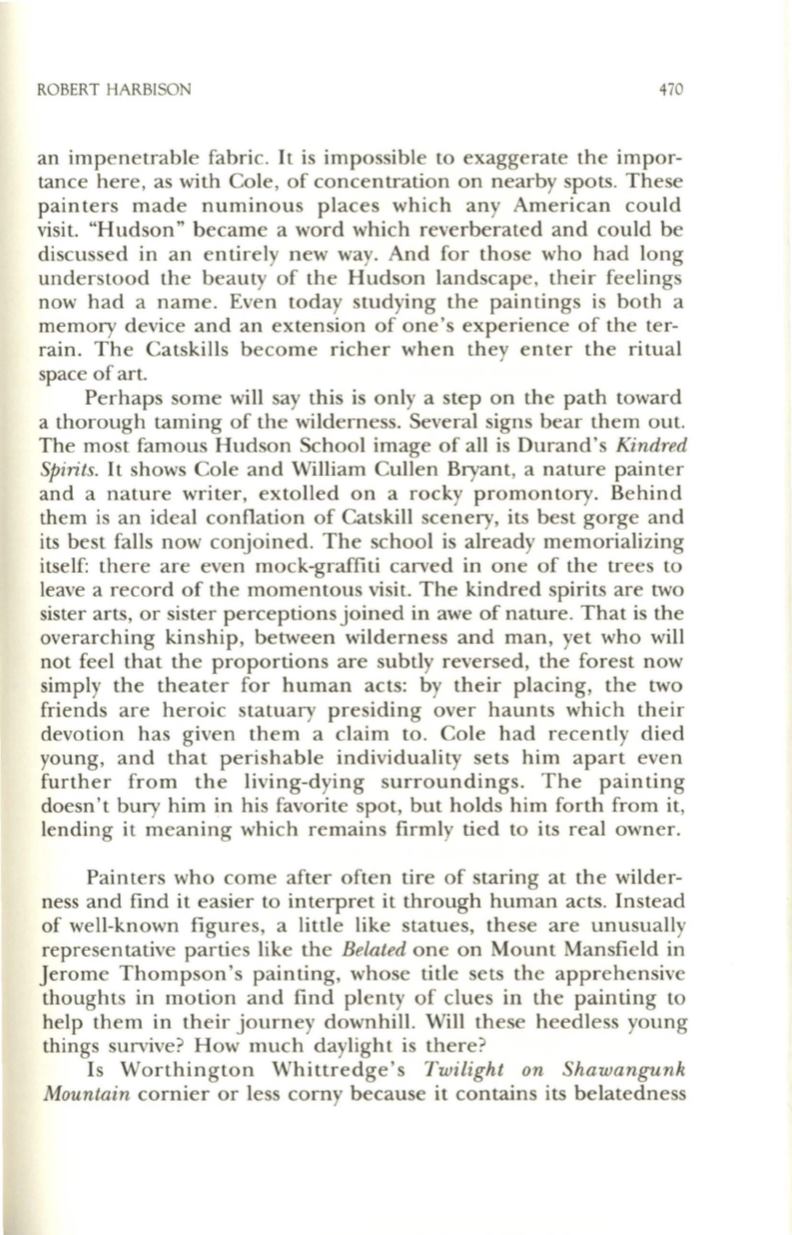
ROBERT HARBISON
470
an impenetrable fabric. It is impossible to exaggerate the impor–
tance here, as with Cole, of concentration on nearby spots. These
painters made numinous places which any American could
visit. "Hudson" became a word which reverberated and could be
discussed in an entirely new way. And for those who had long
understood the beauty of the Hudson landscape, their feelings
now had a name. Even today studying the paintings is both a
memory device and an extension of one's experience of the ter–
rain. The Catskills become richer when they enter the ritual
space of art.
Perhaps some will say this is only a step on the path toward
a thorough taming of the wilderness. Several signs bear them out.
The most famous Hudson School image of all is Durand's
Kindred
Spirits.
It shows Cole and William Cullen Bryant, a nature painter
and a nature writer, extolled on a rocky promontory. Behind
them is an ideal conflation of Catskill scenery, its best gorge and
its best falls now conjoined. The school is already memorializing
itself: there are even mock-graffiti carved in one of the trees to
leave a record of the momentous visit. The kindred spirits are two
sister arts, or sister perceptions joined in awe of nature. That is the
overarching kinship, between wilderness and man, yet who will
not feel that the proportions are subtly reversed, the forest now
simply the theater for human acts: by their placing, the two
friends are heroic statuary presiding over haunts which their
devotion has given them a claim to. Cole had recently died
young, and that perishable individuality sets him apart even
further from the living-dying surroundings. The painting
doesn't bury him in his favorite spot, but holds him forth from it,
lending it meaning which remains firmly tied to its real owner.
Painters who come after often tire of staring at the wilder–
ness and find it easier to interpret it through human acts. Instead
of well-known figures, a little like statues, these are unusually
representative parties like the
Belated
one on Mount Mansfield in
Jerome Thompson's painting, whose title sets the apprehensive
thoughts in motion and find plenty of clues in the painting to
help them in their journey downhill. Will these heedless young
things survive? How much daylight is there?
Is Worthington Whittredge's
Twilight on Shawangunk
Mountain
cornier or less corny because it contains its belatedness


